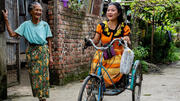-
Country Pages
-
Asie et Pacifique
- Afghanistan
- Bangladesh
- Bhoutan
- Cambodge
- Chine
- Inde
- Indonésie
- République islamique d'Iran
- République démocratique populaire lao
- Malaisie
- Maldives
- Mongolie
- Myanmar
- Népal
- Pakistan
- Papouasie-Nouvelle-Guinée
- Philippines
- Sri Lanka
- Thaïlande
- Timor oriental
- Viet Nam
-
Europe de l'Est et Asie centrale
- Albanie
- Arménie
- Azerbaïdjan
- Bélarus
- Bosnie-Herzégovine
- Géorgie
- Kazakhstan
- Bureau du Kosovo
- Kirghizistan
- Moldavie, République de
- Macédoine du Nord
- Serbie
- Tadjikistan
- Türkiye
- Turkménistan
- Ukraine
- Ouzbékistan
-
États arabes
- Algérie
- Djibouti
- Égypte
- Iraq
- Jordanie
- Liban
- la Libye
- Maroc
- Oman
- Palestine
- Somalie
- Soudan
- République arabe syrienne
- Tunisie
- Yémen
-
Afrique orientale et australe
- Angola
- Botswana
- Burundi
- Comores
- République démocratique du Congo
- Érythrée
- Eswatini
- Éthiopie
- Kenya
- Lesotho
- Madagascar
- Malawi
- Maurice
- Mozambique
- Namibie
- Rwanda
- Seychelles
- Afrique de Sud
- Soudan du Sud
- Tanzanie, République unie de
- Ouganda
- Zambie
- Zimbabwe.
-
Amérique latine et Caraïbes
- Argentine
- Bolivie, État plurinational de
- Brésil
- Chili
- Colombie
- Costa Rica
- Cuba
- République dominicaine
- Équateur
- Salvador (Le)
- Guatemala
- Haïti
- Honduras
- Mexique
- Nicaragua
- Panama
- Paraguay
- Pérou
- Uruguay
- Venezuela, la République bolivarienne du
- Caraïbes (multipays)
-
Afrique de l'Ouest et du Centre
- Bénin
- Burkina Faso
- Cabo Verde
- Cameroun
- République Centrafricaine
- Tchad
- Congo
- Côte d'Ivoire
- Guinée équatoriale
- Gabon
- Gambie
- Ghana
- Guinée
- Guinée-Bissau
- Libéria
- Mali
- Mauritanie
- Niger
- Nigéria
- Sao Tomé-etPrincipe
- Sénégal
- Sierra Leone
- Togo
-
- Accueil
- Les données
- Myanmar

UNFPA Myanmar
With abundant natural resources and a dynamic population, Myanmar still faces slow economic growth. Health system weaknesses have kept maternal mortality high, with a majority of deliveries taking place at home, unassisted by skilled birth attendance. UNFPA support began with the 1973 national census. Current programmes align with national plans on reproductive health, HIV/AIDS and women’s rights. They focus on extending high-quality reproductive and sexual health services, emphasizing HIV prevention. UNFPA assistance also helps expand capacities to produce high-quality demographic data, and conduct research and analysis on gender equality issues.
Population
- Population âgée de 0 à 14 ans (en %)
- Population âgée de 15 à 64 ans (en %)
- Population aged 65+
Santé sexuelle et reproductive
- Part des naissances encadrées par un personnel de santé qualifié
Planification familiale
- Modern method
Éducation
Gender, Rights, and Human Capital
Pratiques nuisibles
Population Pyramid
Espérance de vie
Total fertility rate
nouvelles
« Tout s’est écroulé en quelques secondes » : au Myanmar, femmes et filles ont besoin d’une aide d’urgence après une séisme catastrophique
MANDALAY, Myanmar— « J’ai vécu ici toute ma vie, mais je n’ai jamais connu quoi que ce soit d’aussi dévastateur que ce…
« Un rêve à accomplir » : rendre le Myanmar inclusif pour les personnes en situation de handicap
« J’ai candidaté pour un emploi dans un atelier local de couture. Lorsque mon handicap a été remarqué, l’atelier a…


Réseaux sociaux
Tweets from UNFPATürkiye